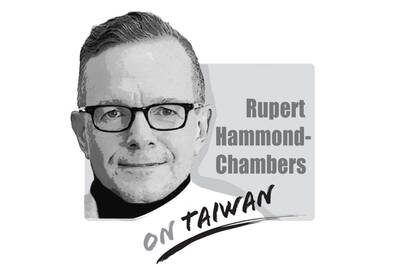As the 2020 US census approaches, the push for Taiwanese-Americans to specify “Taiwanese” as their ethnicity is well under way.
The Taiwanese American Citizens League launched its “Write-in Taiwanese Census 2020 Campaign” earlier this year, and earlier this month the Taiwan Center Foundation of Greater Los Angeles held the annual Miss Taiwanese-American pageant, which was established in 2000 specifically to promote the issue.
Since 1997, groups have been asking the US Census Bureau to include a box for Taiwanese under the race category, but that is not likely to happen, of course due to Chinese pressure — the US Department of State deemed the request “inappropriate,” noting that doing so would “inevitably raise sensitive political questions because it could be misinterpreted as official US recognition of Taiwanese as a racial category that is separate from Chinese.”
Politics aside, the form contains only boxes for “Asian Indian,” “Chinese,” “Filipino,” “Japanese,” “Korean,” “Vietnamese” or “other Asian” — with space to specify the “other.”
In addition, Taiwanese immigration to the US started relatively late and until recent decades Taiwanese immigrants were taught in school to identify as Chinese.
It still matters symbolically to keep making the demand for a Taiwanese box, but it is becoming increasingly important to be counted as Taiwanese as Beijing intensifies its efforts to undermine Taiwan’s sovereignty and convince the world that the nation does not exist.
China can force international companies to list Taiwan as a province of China, lure away Taipei’s allies and use other petty tactics to sabotage Taiwan’s international endeavors, but it cannot control what people write on the US census forms.
Ben Ling (林君威), a former president of the Taiwanese American Citizens League, told the Taipei Times last month that being counted “pretty much legitimizes our identity” in the world where Taiwanese are often not recognized.
A more practical issue is that the population numbers shown in the 2010 census indicate how many people bothered to write Taiwanese in the “Other Asian” box — and spelled it correctly — or answered the question at all.
There is a significant discrepancy between the census numbers and US Department of Homeland Security data, meaning that it is not clear how many Taiwanese there really are in the US.
The huge increase in the Taiwanese-American population between 2000 and 2010 might be due to the success of the write in “Taiwanese” campaigns.
A general sense of Taiwanese nationality did not develop until the past 20 years or so, but it has grown stronger in recent years.
Once shunned by Taiwan’s government and considered vulgar, Taiwanese culture is now in vogue, and is becoming repopularized through mass entertainment such as video games and television dramas. This focus on local culture will also likely make more people proud to write down Taiwanese in the census.
Finally, due to the stark difference in how Taiwan and China are run, as well as their contrasting histories, accuracy of the vital statistics and needs of their immigrants is crucial, since the census data affect US government policies.
For example, the US Office of Minority Health Web site’s Asian-American Profile page states that “Taiwanese had the highest percentage of bachelor’s degree attainment at 77 percent,” while 73.2 percent Taiwanese were employed in high-skilled and managerial sectors.
This kind of data can be crucial to influencing policy decisions, making it even more important to be counted.

In the past month, two important developments are poised to equip Taiwan with expanded capabilities to play foreign policy offense in an age where Taiwan’s diplomatic space is seriously constricted by a hegemonic Beijing. Taiwan Foreign Minister Lin Chia-lung (林佳龍) led a delegation of Taiwan and US companies to the Philippines to promote trilateral economic cooperation between the three countries. Additionally, in the past two weeks, Taiwan has placed chip export controls on South Africa in an escalating standoff over the placing of its diplomatic mission in Pretoria, causing the South Africans to pause and ask for consultations to resolve
An altercation involving a 73-year-old woman and a younger person broke out on a Taipei MRT train last week, with videos of the incident going viral online, sparking wide discussions about the controversial priority seats and social norms. In the video, the elderly woman, surnamed Tseng (曾), approached a passenger in a priority seat and demanded that she get up, and after she refused, she swung her bag, hitting her on the knees and calves several times. In return, the commuter asked a nearby passenger to hold her bag, stood up and kicked Tseng, causing her to fall backward and
In December 1937, Japanese troops captured Nanjing and unleashed one of the darkest chapters of the 20th century. Over six weeks, hundreds of thousands were slaughtered and women were raped on a scale that still defies comprehension. Across Asia, the Japanese occupation left deep scars. Singapore, Malaya, the Philippines and much of China endured terror, forced labor and massacres. My own grandfather was tortured by the Japanese in Singapore. His wife, traumatized beyond recovery, lived the rest of her life in silence and breakdown. These stories are real, not abstract history. Here is the irony: Mao Zedong (毛澤東) himself once told visiting
When I reminded my 83-year-old mother on Wednesday that it was the 76th anniversary of the founding of the People’s Republic of China, she replied: “Yes, it was the day when my family was broken.” That answer captures the paradox of modern China. To most Chinese in mainland China, Oct. 1 is a day of pride — a celebration of national strength, prosperity and global stature. However, on a deeper level, it is also a reminder to many of the families shattered, the freedoms extinguished and the lives sacrificed on the road here. Seventy-six years ago, Chinese Communist leader Mao Zedong (毛澤東)